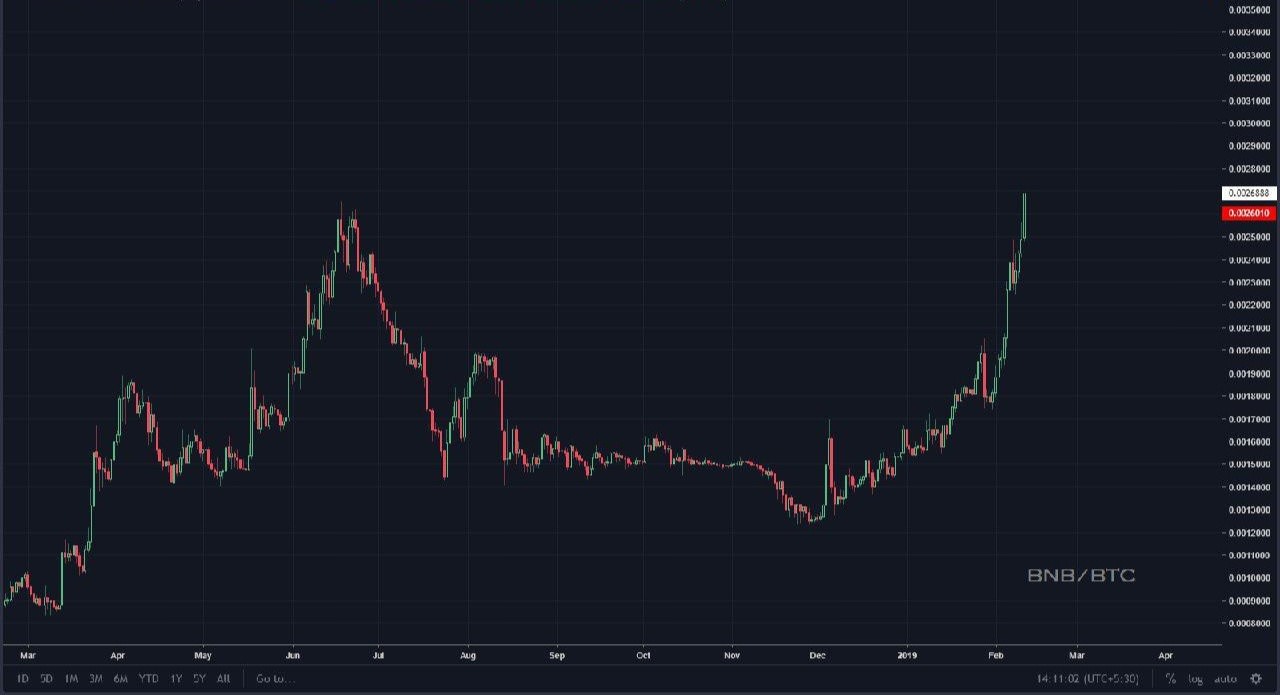Marketing specialists should know how to promote cryptocurrency brands in the periods of high volatility and investor uncertainty
The cryptocurrency market has been volatile from the very beginning, but the last couple of years have been a particularly wild ride for millions of investors around the world. Many have made millions on the big upswings, and yet many have lost large and small investments in the bursting bubbles and sudden market downturns.
Still, marketing specialists should know how to promote cryptocurrency brands in the periods of high volatility and investor uncertainty. To understand how to do it, we should determine the factors that influence the price of digital currency and ways to use them to our advantage.
Download our Free Resource – 10 digital marketing megatrends 2019
This free guide for all members shows how your business can get an edge by reviewing 5 key types of marketing trends and specific digital marketing techniques which will help your business become more competitive.
Access the
So why are cryptocurrencies so volatile? Here are the main reasons that the price of Bitcoin and other cryptocurrencies is so unpredictable.
1. Cryptocurrency is still an emerging market
Despite all of the media attention that cryptocurrencies have had over the years, the size of the market is still minuscule compared to fiat currencies and gold. Even at its peak, the cryptocurrency market was only around $800 billion. That’s loose change compared to the total value of the gold market at $7.9 trillion, and $28 trillion for the United States stock market.
This relatively small market size means that smaller forces can have a larger effect on price. If one group of investors decided to sell $500 million in gold, it would barely create a ripple in the price of gold. If the same happened to Bitcoin, it would be enough to destabilize the whole market and crash the price.
However, the fact that the cryptocurrency market is still developing also means there are many opportunities to hit it with a new and exciting project. For example, not so long ago the Telegram developers announced the launch of blockchain platform TON and coin Gram. Interestingly, neither of these projects has been completed yet, but news media have already publicized the initiative. So, entering the emerging market is a good way to get your product talked about and, therefore, known and recognized.

2. Cryptocurrencies are purely digital
Most cryptocurrencies like Bitcoin are purely digital assets and aren’t backed by anything physical like a currency or commodity. That means that their price is set entirely by the laws of supply and demand. Since the supply of many cryptocurrencies like Bitcoin is fixed or predictable, the price is dependent on how many people want to buy Bitcoin right now.
There is no physical asset to back the value of the major cryptocurrencies or governments to enforce their use as a currency. That means their value is backed entirely by faith. If people no longer believe that the value of Bitcoin will hold or continue to rise, they’ll likely sell. This can reduce the price and convince others to sell too, so a cycle forms and quickly plunges the price downwards. The opposite can also happen to shoot prices up and form over-inflated price bubbles.
3. The technology is still developing
Blockchain and other alternative crypto technologies are still in their early stages of development. It’s barely been a decade since the idea of cryptography-based decentralized currencies was published in the Bitcoin whitepaper, so it will be a while before the market matures. Nevertheless, many companies have already adopted blockchain technology and are actively using it for marketing and advertising purposes. The most promising projects in the sphere are AdEx, Brave, and Steem. Since many customers find transparency and other advantages of blockchain attractive, exploring this technology may be very beneficial in brand marketing.
Particularly stubborn technological hurdles like the blockchain scalability problem cause downward pressure on crypto prices when they aren’t solved in the timeframe that many expect. Or, when their consequences get crystallized in the form of network congestion and high transaction prices.
On the other hand, pivotal developments in the technology can have a boosting effect. This includes structural progress such as the Bitcoin Lightning Network or new popular applications on blockchain platforms such as Ethereum. There are also lots of new cryptocurrencies popping up all the time looking to compete and take some market share from the established ones.

4. Speculation
One of the biggest drivers of volatility in the cryptocurrency market is speculation. This involves investors betting that the price of different cryptocurrencies will go up or down by buying and selling cryptocurrencies. In fact, it is the volatility of the cryptocurrency market that lures speculative traders looking to make big money by guessing the swings.
If you can pick when the price of Bitcoin or XRP will burst upwards and buy right before it does, you can make a killing. Likewise, if you can short sell a cryptocurrency right before it crashes, you can profit too. Many investors are constantly trying to guess the up and down swings of the cryptocurrency market. These speculative bets cause even more volatility in an already choppy market.
5. The media
As cryptocurrency is a small market of digital assets with tons of speculation, the media has a massive impact on where the prices go. Speculators and investors are constantly eyeing the headlines for the next big news story that will launch or crash the market. When something does emerge, everyone knows it's a race to buy or sell and the fastest will profit the most, while the slowest will lose the most.
Media stories surrounding the cryptocurrency market have an outsized impact on the prices of it. It doesn’t help that many in the cryptocurrency industry get their news from not so credible outlets and social media.
Often, the media strive to be the first to tell exciting news about the world of cryptocurrency. Therefore, some marketing specialists have learned to ride the wave of hype surrounding Bitcoin’s rises and falls and benefit from them. For example, if the price of cryptocurrency increases, you can get some promotional buzz for your brand by introducing cryptocurrency as a method of payment.
6. The crypto investor profile
The last factor is the average investor profile in the cryptocurrency industry. Unlike other markets, such as real estate and the stock market, the barriers to entry into cryptocurrency trading and investing are extremely low. You don’t need a lawyer, trading license, or a minimum amount of capital to invest. Anyone with a few bucks and an internet connection can start trading instantly.
This is why the crypto market is the market of choice for millions of amateur traders around the world. On the other hand, institutional investors are particularly cautious of the crypto market. Many see it as far too risky to go near at all, let alone invest serious capital in it.
Combine these two, and the average investor in the cryptocurrency market is far less experienced and educated than with most other markets. This means that the cryptocurrency markets are extremely vulnerable to hype, FUD (fear, uncertainty, and doubt) and outright manipulation. In situations where experienced traders might keep their cool, crypto traders often panic.
It all adds up
All of these factors combine to push the cryptocurrency prices in seemingly random directions at random time intervals. Experts are consistently shown to be wrong about predicting the crypto market, and that probably won’t change any time soon. However, understanding that the market is so quick to change can help you be prepared to better market brands that use cryptocurrencies.
Mary Callahan is an expert on Bitcoin-related topics and works as a journalist at Cex.io - cryptocurrency exchange. She writes articles related to blockchain security, bitcoin purchase guides or bitcoin regulations in different countries. You can connect with her on
LinkedIn.








